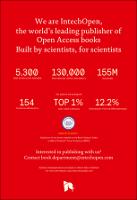Chapter Microbial Bioremediation of Petroleum Hydrocarbon – Contaminated Marine Environments
Author(s)
Mahjoubi, Mouna
Cappello, Simone
Souissi, Yasmine
Jaouani, Atef
Cherif, Ameur
Language
EnglishAbstract
Petroleum pollution has become a serious environmental problem, which can cause harmful damage to the environment and human health. This pollutant is introduced into the environment from both natural and anthropogenic sources. Various physicochemical and biological treatments were developed for the cleanup of contaminated environments. However, bioremediation is based on the metabolic capabilities of microorganisms, and it is considered as the most basic and reliable way to eliminate contaminants, particularly petroleum and its recalcitrant compounds. It is more effective alternative comparing to classical remediation techniques. A high diversity of potential hydrocarbon degrader’s microorganisms was reported, and bacteria constitute the most abundant group, which has been well studied for hydrocarbon degradation. Several bioremediation approaches through bioaugmentation or/and biostimulation have been successfully applied. The interest on the optimizing of different parameters to achieve successful bioremediation technologies has been increased. In this chapter, we summarize the diversity and the hydrocarbon degradation potential of microorganism involved in the remediation of contaminated environments. We also present an overview of the efficient bioremediation strategies used for the decontamination of polluted marine environments.
Keywords
bioremediation, hydrocarbonoclastic, hydrocarbon degradation, toxicity, biosurfactantDOI
10.5772/intechopen.72207Publisher
InTechOpenPublisher website
https://www.intechopen.com/Publication date and place
2018Classification
Petroleum technology


 Download
Download